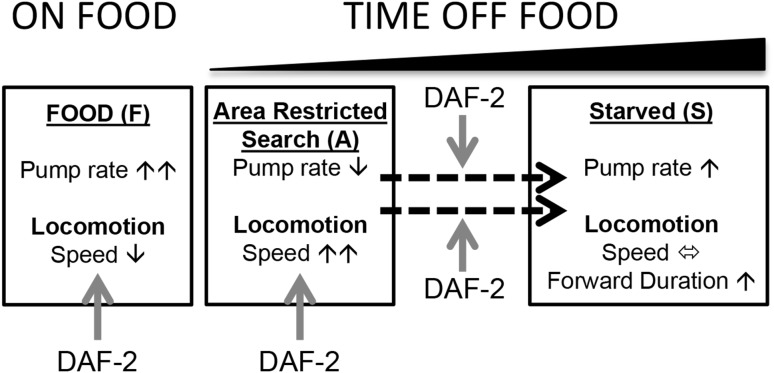Fig. 5.
Schematic representation of insulin regulation of food-dependent behaviour. The adaptive changes in locomotion and feeding behaviour that occur under each condition are indicated by the black arrows. Insulin signalling, indicated by red arrows, modulates both behaviours on food and in the area-restricted search and it is required for the adaptation in both behaviours measured after 60-min off food. It is clear that both on and off food responses represent distinct contexts and the intersection of DAF-2-dependent signalling with the determinants of changing locomotion or pharyngeal function might be at the level of stimulation or inhibition of the circuits that organize these behaviours. An example would be the distinct role that eat-4 and unc-31 pathways play in pumping off food providing DAF-2 with distinct routes to selectively modulate off food pumping (Dallière et al. 2016) (color figure online)

